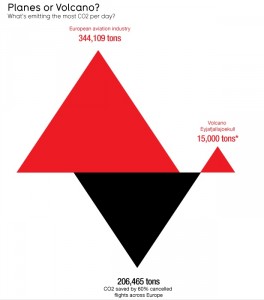Another section of my new paper, now entitled ‘The Future of Learning Environments. The section looks at Personal Learning Environments and Vygotsky.
The emergence of Personal Learning Environments
Dave Wiley, in a paper entitled ‘Open for learning: the CMS and the Open Learning Network‘ and co-written with Jon Mott, explains the failure of Technology Enhanced Education as being due to the way technology has been used to maintain existing practices:
“by perpetuating the Industrial Era-inspired, assembly line notion that the semester-bound course is the naturally appropriate unit of instruction (Reigeluth, 1999).”
The paper quotes Herrington, Reeves, and Oliver (2005) who argue that course management software leads universities to “think they are in the information industry”. In contrast to”the authentic learning environments prompted by advances in cognitive and constructivist learning theories”:
“the industrial, course management model has its center of gravity in teachers generating content, teachers gathering resources, teachers grouping and sequencing information, and teachers giving the information to students.”
In contrast, socio-cultural theories of knowledge acquisition stress the importance of collaborative learning and ‘learning communities’. Agostini et al. (2003) complain about the lack of support offered by many virtual learning environments (VLEs) for emerging communities of interest and the need to link with official organisational structures within which individuals are working. Ideally, VLEs should link knowledge assets with people, communities and informal knowledge (Agostini et al, 2003) and support the development of social networks for learning (Fischer, 1995). The idea of a personal learning space is taken further by Razavi and Iverson (2006) who suggest integrating weblogs, ePortfolios, and social networking functionality in this environment both for enhanced e-learning and knowledge management, and for developing communities of practice.
Based on these ideas of collaborative learning and social networks within communities of practice, the notion of Personal Learning Environments is being put forward as a new approach to the development of e-learning tools (Wilson et al, 2006) that are no longer focused on integrated learning platforms such as VLEs or course management systems. In contrast, these PLEs are made-up of a collection of loosely coupled tools, including Web 2.0 technologies, used for working, learning, reflection and collaboration with others. PLEs can be seen as the spaces in which people interact and communicate and whose ultimate result is learning and the development of collective know-how. A PLE can use social software for informal learning which is learner driven, problem-based and motivated by interest – not as a process triggered by a single learning provider, but as a continuing activity.
Personal Learning Environments are by definition individual. However it is possible to provide tools and services to support individuals in developing their own environment. In looking at the needs of careers guidance advisors for learning Attwell. Barnes, Bimrose and Brown, (2008) say a PLE should be based on a set of tools to allow personal access to resources from multiple sources, and to support knowledge creation and communication. Based on an initial scoping of knowledge development needs, a list of possible functions for a PLE have been suggested, including: access/search for information and knowledge; aggregate and scaffold by combining information and knowledge; manipulate, rearrange and repurpose knowledge artefacts; analyse information to develop knowledge; reflect, question, challenge, seek clarification, form and defend opinions; present ideas, learning and knowledge in different ways and for different purposes; represent the underpinning knowledge structures of different artefacts and support the dynamic re-rendering of such structures; share by supporting individuals in their learning and knowledge; networking by creating a collaborative learning environment.
Whilst PLEs may be represented as technology, including applications and services, more important is the idea of supporting individual and group based learning in multiple contexts and of promoting learner autonomy and control. Conole (2008) suggests a personal working environment and mixture of institutional and self selected tools are increasingly becoming the norm. She says: “Research looking at how students are appropriating technologies points to similar changes in practice: students are mixing and matching different tools to meet their personal needs and preferences, not just relying on institutionally provided tools and indeed in some instances shunning them in favour of their own personal tools.”
Vygotsky and Personal Learning Environments
A Personal Learning Environment is developed from tools or artefacts. Vygotsky (1978) considered that all artefacts are culturally, historically and institutionally situated. “In a sense, then, there is no way not to be socioculturally situated when carrying out an action. Conversely there is no tool that is adequate to all tasks, and there is no universally appropriate form of cultural mediation. Even language, the ‘tool of tools’ is no exception to this rule” (Cole and Wertsch, 2006). Social networking tools are culturally situated artefacts. Jyri Engestrom (2005) says “the term ‘social networking’ makes little sense if we leave out the objects that mediate the ties between people. Think about the object as the reason why people affiliate with each specific other and not just anyone. For instance, if the object is a job, it will connect me to one set of people whereas a date will link me to a radically different group. This is common sense but unfortunately it’s not included in the image of the network diagram that most people imagine when they hear the term ‘social network.’ The fallacy is to think that social networks are just made up of people. They’re not; social networks consist of people who are connected by a shared object.”
Vygotsky’s research focused on school based learning. He developed the idea of the Zone of Proximal Development (ZPD) which is the gap between “actual developmental level” which children can accomplish independently and the “potential developmental level” which children can accomplish when they are interacting with others who are more capable peers or adults.
In Vygotsky’s view, interactions with the social environment, including peer interaction and/or scaffolding, are important ways to facilitate individual cognitive growth and knowledge acquisition. Therefore, learning presupposes a specific social nature and a process by which children grow into the intellectual life of those around them. Vygotsky said that learning awakens a variety of internal developmental processes that are able to operate only when the child is interacting with people in his (sic) environment and in cooperation with his peers. Once these processes are internalized, they become part of the child’s independent developmental achievement (Vygotsky, 1978).
Vygotsky also emphasized the importance of the social nature of imagination play for development. He saw the imaginary situations created in play as zones of proximal development that operate as mental support system (Fleer, 2008).
Vykotsky called teachers – or peers – who supported learning in the ZDP as the More Knowledgeable Other. “The MKO is anyone who has a better understanding or a higher ability level than the leaner particularly in regards to a specific task, concept or process. Traditionally the MKO is thought of as a teacher, an older adult or a peer” (Dahms et al, 2007). But the MKO can also be viewed as a learning object or social software which embodies and mediates learning at higher levels of knowledge about the topic being learned than the learner presently possesses.
The role of a Personal Learning Environment may be not only that of a tool to provide access to ‘More Knowledgeable Others’ but as part of a system to allow learners to link learning to performance in practice, though work processes. And taking a wider view of artefacts as including information or knowledge accessed through a PLE, reflection on action or performance may in turn generate new artefacts for others to use within a ZPD.
Dahms et all (2007) say that Vygotsky’s findings suggest methodological procedures for the classroom. “In Vygotskian perspective, the ideal role of the teacher is that of providing scaffolding (collaborative dialogue) to assist students on tasks within their zones of proximal development”(Hamilton and Ghatala, 1994). ”During scaffolding the first step is to build interest and engage the learner. Once the learner is actively participating, the given task should be simplified by breaking it into smaller sub-tasks. During this task, the teacher needs to keep the learner focused, while concentrating on the most important ideas of the assignment. One of the most integral steps in scaffolding consists of keeping the learner from becoming frustrated. The final task associated with scaffolding involves the teacher modelling possible ways of completing tasks, which the learner can then imitate and eventually internalise” (Dahms et al., 2007).
Social media and particularly video present rich opportunities for the modelling of ways of completing a task, especially given the ability of using social networking software to support communities of practice. However, imitation alone may not be sufficient in the context of advanced knowledge work. Rather, refection is required both to understand more abstract models and at the same time to reapply models to particular contexts and instances of application in practice. Thus PLE tools need to be able to support the visualisation or representation of models and to promote reflection on their relevance and meaning in context. Although Vygotsky saw a process whereby children could learn to solve novel problems “on the basis of a model he [sic] has been shown in class”, in this case the model is embodied in technological artefacts (although still provided by a ‘teacher’ through the creation of the artefact).
Within this perspective a Personal Learning Environment could be seen as allowing the representation of knowledge, skills and prior learning and a set of tools for interaction with peers to accomplish further tasks. The PLE would be dynamic in that it would allow reflection on those task and further assist in the representation of prior knowledge, skills and experiences. In this context experiences are seen as representing performance or practice. Through access to external symbol systems (Clark, 1997) such as metadata, ontologies and taxonomies the internal learning can be transformed into externalised knowledge and become part of the scaffolding for others as a representation of a MKO within a Zone of Proximal Development. Such an approach to the design of a Personal Learning Environment can bring together the everyday evolving uses of social networks and social media with pedagogic theories to learning.
References
Agostini, A., Albolino, S., Michelis, G. D., Paoli, F. D., & Dondi, R. (2003). Stimulating knowledge discovery and sharing. Paper presented at the 2003 International ACM SIGGROUP conference on Supporting group work, Sanibel Island, Florida, USA.
Attwell G. Barnes S.A., Bimrose J. and Brown A, (2008), Maturing Learning: Mashup Personal Learning Environments, CEUR Workshops proceedings, Aachen, Germany
Clark, Andy. Being There: Putting Brain, Body, and World Together Again. Cambridge, Massachusetts: A Bradford Book, The MIT Press, 1997.
Cole M. and Werstch J. (1996), Beyond the Individual-Social Antimony in Discussions of Piaget and Vygotsky. Michael Cole, University of California, San Diego
Conole G. (2008), New Schemas for Mapping Pedagogies and Technologies, Ariadne Issue 56 , http://www.ariadne.ac.uk/issue56/conole/
Dahms M, Geonnotti K, Passalacqua. D Schilk,N.J. Wetzel, A and Zulkowsky M The Educational Theory of Lev Vygotsky: an analysis http://www.newfoundations.com/GALLERY/Vygotsky.html
Engestrom J (2005) Why some social network services work and others don’t — Or: the case for object-centered sociality, http://www.zengestrom.com/blog/2005/04/why_some_social.html
Fischer, M. D. (1995). Using computers in ethnographic fieldwork. In R. M. Lee (Ed.), Information Technology for the Social Scientist (pp. 110-128). London: UCL Press
Fleer M and Pramling Samuelsson I, (2008), Play and Learning in Early Childhood Settings: International Perspectives, Springer
Hamilton R and Ghatala E, (1994) Learning and Instruction, New York: McGraw-Hill, 277.
Herrington, J., Reeves, T., and Oliver, R. (2005). Online learning as information delivery: Digital myopia. Journal of Interactive Learning Research, 16(4): 353-67.
Vygotsky L.(1978) Mind in society: The development of higher psychological processes. Cambridge, MA, Harvard University Press.
Wiley D. and Mott J. (2009), Open for learning: the CMS and the Open Learning Network, in education, issue 15 (2), http://www.ineducation.ca/article/open-learning-cms-and-open-learning-network
Wilson, S., Liber, O., Johnson, M., Beauvoir, P., Sharples, P., & Milligan, C. (2006). Personal learning environments challenging the dominant design of educational systems. Paper presented at the ECTEL Workshops 2006, Heraklion, Crete (1-4 October 2006).


